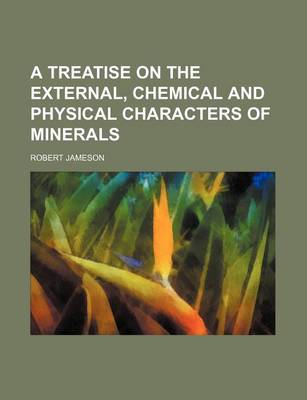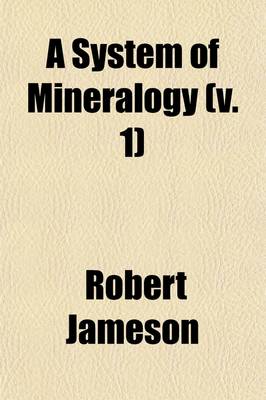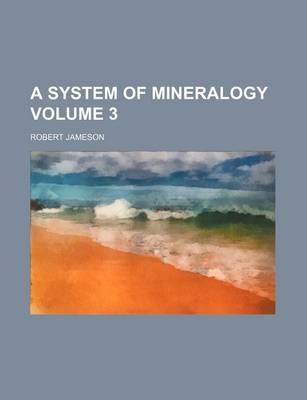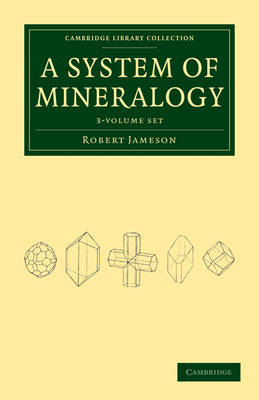Cambridge Library Collection - Earth Science
1 primary work • 5 total works
Volume 1
Robert Jameson (1774–1854) was a renowned geologist who held the chair of natural history at Edinburgh from 1804 until his death. A pupil of Gottlob Werner at Freiberg, he was in turn one of Charles Darwin's teachers. Originally a follower of Werner's influential theory of Neptunism to explain the formation of the earth's crust, and an opponent of Hutton and Playfair, he was later won over by the idea that the earth was formed by natural processes over geological time. He was a controversial writer, accused of bias towards those who shared his Wernerian sympathies such as Cuvier, while attacking Playfair, Hutton and Lyell. He built up an enormous collection of geological specimens, which provided the evidence for his System of Mineralogy, first published in 1808 and here reprinted from the second edition of 1816. Volume 2 continues 'earthy minerals' and covers saline and inflammable minerals, including coals.
A Treatise on the External, Chemical and Physical Characters of Minerals
by Robert Jameson
Published 8 January 2010
The renowned geologist Robert Jameson (1774-1854) held the chair of natural history at Edinburgh from 1804 until his death. A pupil of Gottlob Werner at Freiberg, he was in turn one of Charles Darwin's teachers. Originally a follower of Werner's influential theory of Neptunism to explain the formation of the earth's crust, he was later won over by the idea that the earth was formed by natural processes over geological time. Jameson was a controversial writer, accused of bias towards those who shared his Wernerian sympathies, such as Cuvier, while attacking Playfair, Hutton and Lyell. This book, first published in 1805, of which the 1816 second edition is reissued here, gives physical descriptions of the minerals discussed in his three-volume System of Mineralogy (also reissued in this series). Dividing minerals into solid, friable and fluid types, he describes and gives the English, German, French and Latin names of each.
Robert Jameson (1774-1854) was a renowned geologist who held the chair of natural history at Edinburgh from 1804 until his death. A pupil of Gottlob Werner at Freiberg, he was in turn one of Charles Darwin's teachers. Originally a follower of Werner's influential theory of Neptunism to explain the formation of the earth's crust, and an opponent of Hutton and Playfair, he was later won over by the idea that the earth was formed by natural processes over geological time. He was a controversial writer, accused of bias towards those who shared his Wernerian sympathies such as Cuvier, while attacking Playfair, Hutton and Lyell. He built up an enormous collection of geological specimens, which provided the evidence for his System of Mineralogy, first published in 1808 and here reprinted from the second edition of 1816. Volume 1 deals with what Jameson terms 'earthy minerals', including diamonds, rubies and feldspar.
Robert Jameson (1774-1854) was a renowned geologist who held the chair of natural history at Edinburgh from 1804 until his death. A pupil of Gottlob Werner at Freiberg, he was in turn one of Charles Darwin's teachers. Originally a follower of Werner's influential theory of Neptunism to explain the formation of the earth's crust, and an opponent of Hutton and Playfair, he was later won over by the idea that the earth was formed by natural processes over geological time. He was a controversial writer, accused of bias towards those who shared his Wernerian sympathies such as Cuvier, while attacking Playfair, Hutton and Lyell. He built up an enormous collection of geological specimens, which provided the evidence for his System of Mineralogy, first published in 1808 and here reprinted from the second edition of 1816. Volume 3 deals with metal ores such as gold, iron and lead.
Robert Jameson (1774-1854) was a renowned geologist who held the chair of natural history at Edinburgh from 1804 until his death. A pupil of Gottlob Werner at Freiberg, he was in turn one of Charles Darwin's teachers. Originally a follower of Werner's influential theory of Neptunism to explain the formation of the earth's crust, and an opponent of Hutton and Playfair, he was later won over by the idea that the earth was formed by natural processes over geological time. He was a controversial writer, accused of bias towards those who shared his Wernerian sympathies such as Cuvier, while attacking Playfair, Hutton and Lyell. He built up an enormous collection of geological specimens, which provided the evidence for his System of Mineralogy, first published in 1808 and here reprinted from the second edition of 1816. Jameson's position in the academic world helped prolong the acceptance of Werner's theory.




